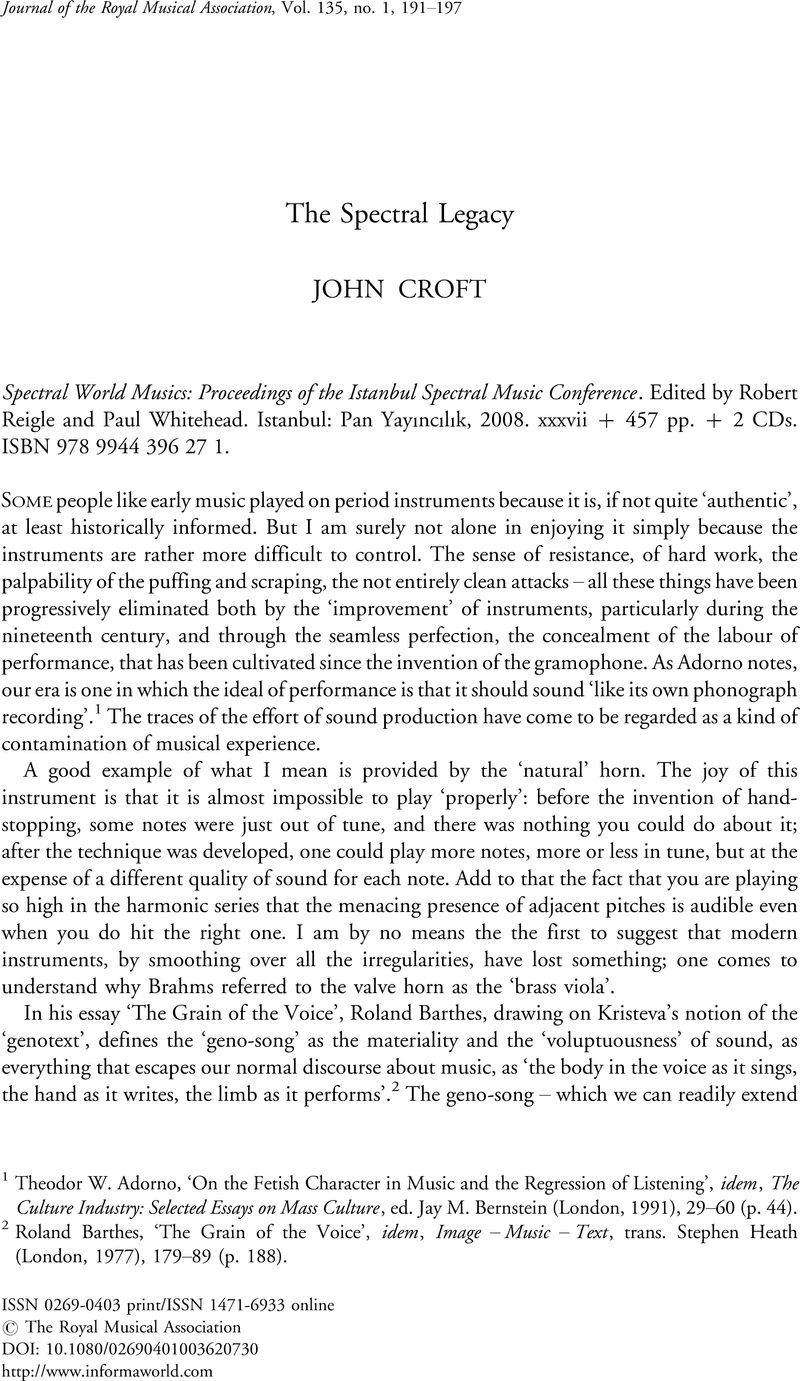
1 Theodor W. Adorno, ‘On the Fetish Character in Music and the Regression of Listening’, idem, The Culture Industry: Selected Essays on Mass Culture, ed. Jay M. Bernstein (London, 1991), 29–60 (p. 44).
2 Roland Barthes, ‘The Grain of the Voice’, idem, Image – Music – Text, trans. Stephen Heath (London, 1977), 179–89 (p. 188).
3 Barthes, ‘The Grain of the Voice’, 185.
4 Actually, not exactly ‘certain’: the Gábor Uncertainty Principle – an exact analogue of Heisenberg uncertainty – tells us that we cannot determine both the frequency and the temporal dimensions of a spectrum with increasing accuracy. A more accurate measure of the temporal aspect of a partial entails a less accurate measurement of its frequency, and vice versa.
5 Grisey at Darmstadt, 1978, quoted in François Rose, ‘Introduction to the Pitch Organization of French Spectral Music’, Perspectives of New Music, 34 (1996), 6–39 (p. 8).
6 Helmut Lachenmann, ‘Philosophy of Composition: Is There Such a Thing?’, Identity and Difference: Essays on Music, Language and Time, ed. Peter Dejans et al. (Leuven, 2004), 55–69 (p. 66).